Complete Solutions to Exercises Linked Comprehension of chapter ORGANIC COMPOUNDS WITH FUNCTIONAL GROUP of Class 12 book with complete answers and questions
| Class 12 | CHEMISTRY |
| Chapter | ORGANIC COMPOUNDS WITH FUNCTIONAL GROUP |
| CENGAGE CHEMISTRY | Exercises Linked Comprehension |
| Number Of Questions | 25 |
| Academic Year | 2023-24 |
(i)
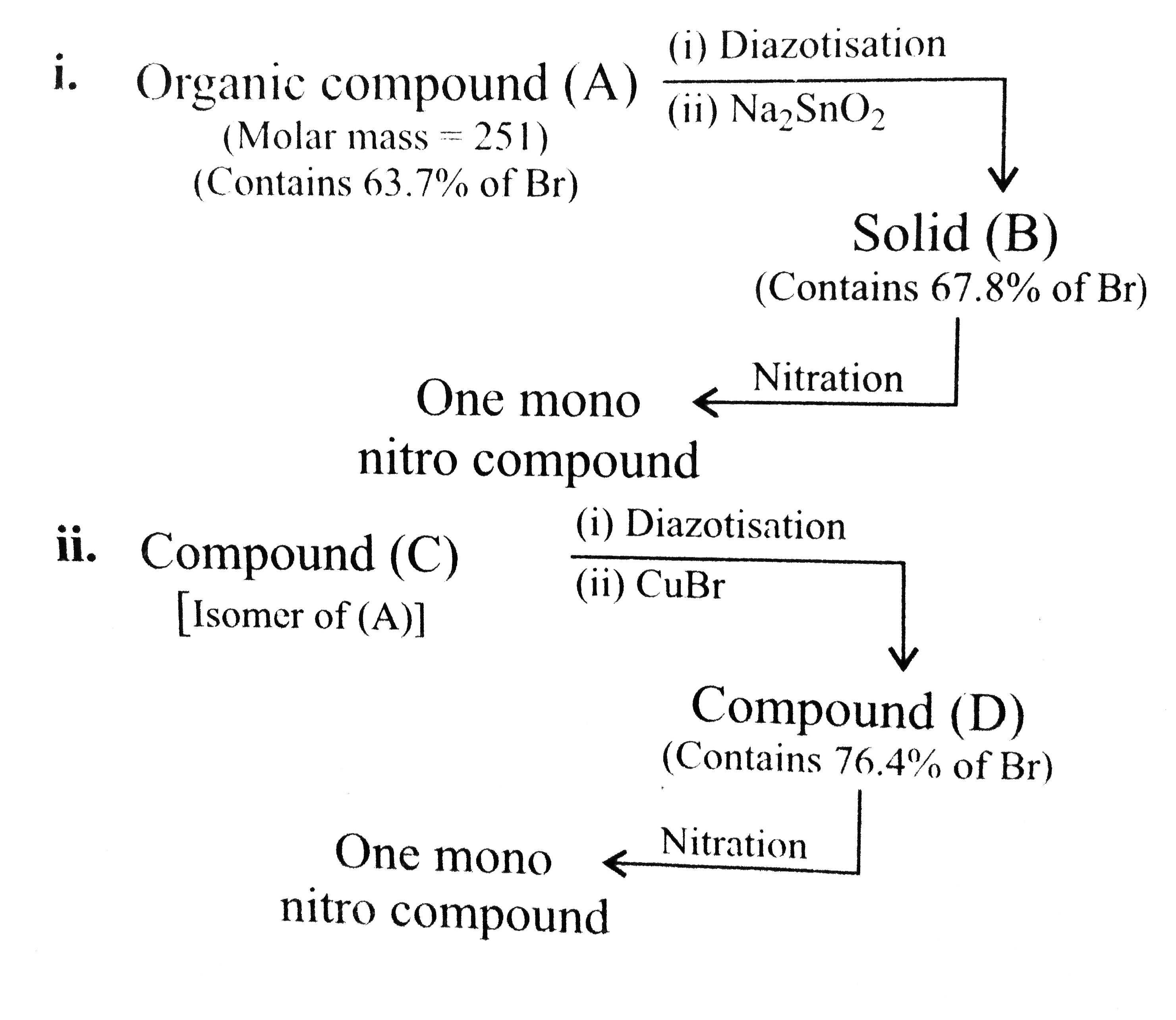
Compound`(A)`is:10:01View Solution(i)
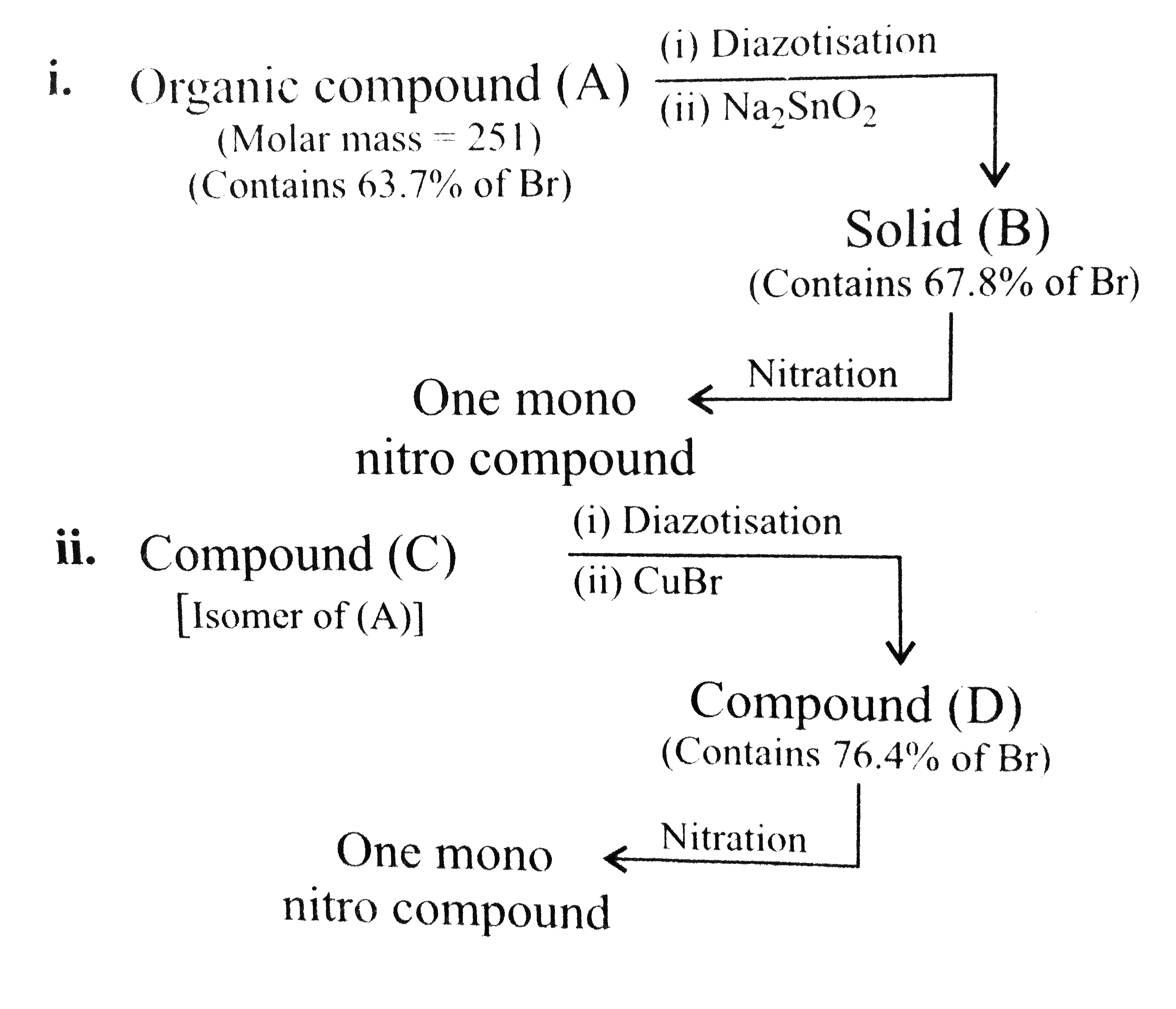
(ii)
Compound`(C)`is:10:01View Solution(i)
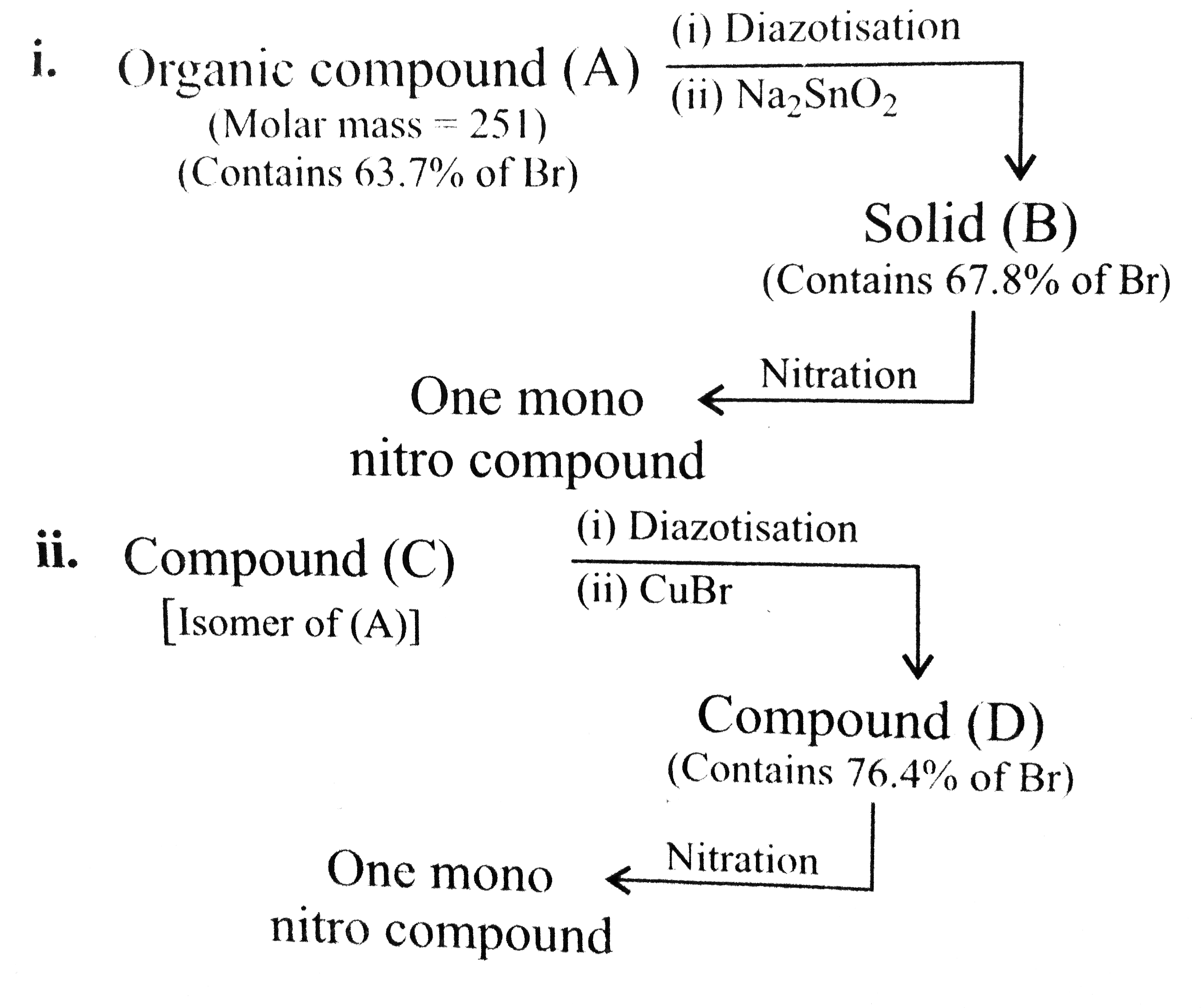
(ii)
Compound`(B)`is:10:01View Solution(i)
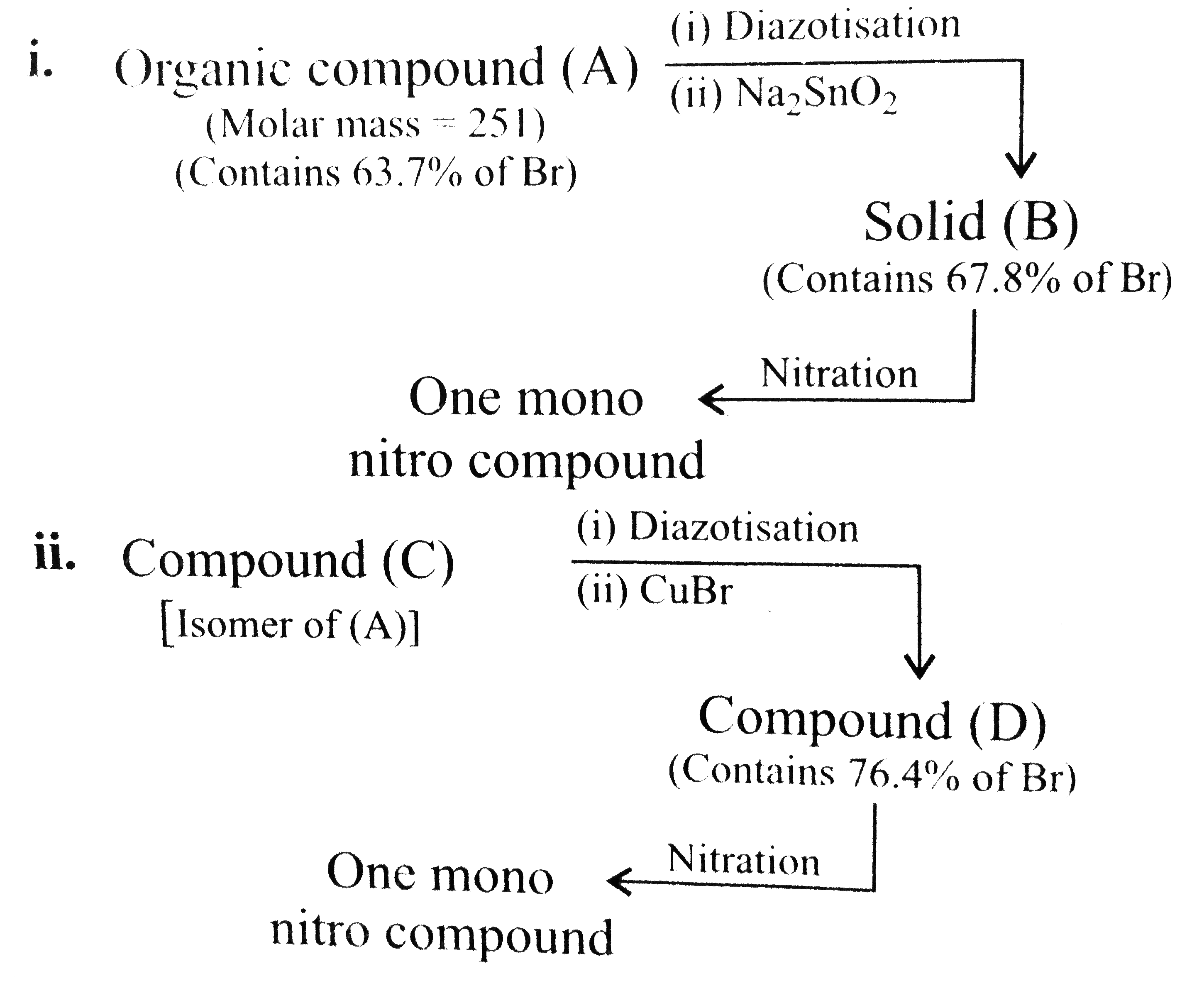
(ii)
Compound`(D)`is:10:01View SolutionAn amino acid reacts with `10ml 0.05MNaOH` and the final solution has`pH=2.30` When`20ml` of these base is added in the resulting solution.The `pH` become`9.7`.Identify the amino acid and calculate the isoelectric point of the amino acid.This amino acid is prepared by the reaction of compound `(X)`with `NH_(3)`and further hydrolysis with `HCN`compound `(X)` is less `C`atom containing compound that gives postitive iodoform test and positive Fehling's solution test.
Amino acid is:10:27View SolutionAn amino acid reacts with `10ml 0.05MNaOH` and the final solution has`pH=2.30` When`20ml` of these base is added in the resulting solution.The `pH` become`9.7`.Identify the amino acid and calculate the isoelectric point of the amino acid.This amino acid is prepared by the reaction of compound `(X)`with `NH_(3)`and further hydrolysis with `HCN`compound `(X)` is less `C`atom containing compound that gives postitive iodoform test and positive Fehling's solution test.
Compound (X) is:10:27View SolutionAn amino acid reacts with `10ml 0.05MNaOH` and the final solution has`pH=2.30` When`20ml` of these base is added in the resulting solution.The `pH` become`9.7`.Identify the amino acid and calculate the isoelectric point of the amino acid.This amino acid is prepared by the reaction of compound `(X)`with `NH_(3)`and further hydrolysis with `HCN`compound `(X)` is less `C`atom containing compound that gives postitive iodoform test and positive Fehling's solution test.
Isoelectric point of the amino acid is:10:27View Solution Compound`(A)`is:10:22View Solution
Compound`(A)`is:10:22View Solution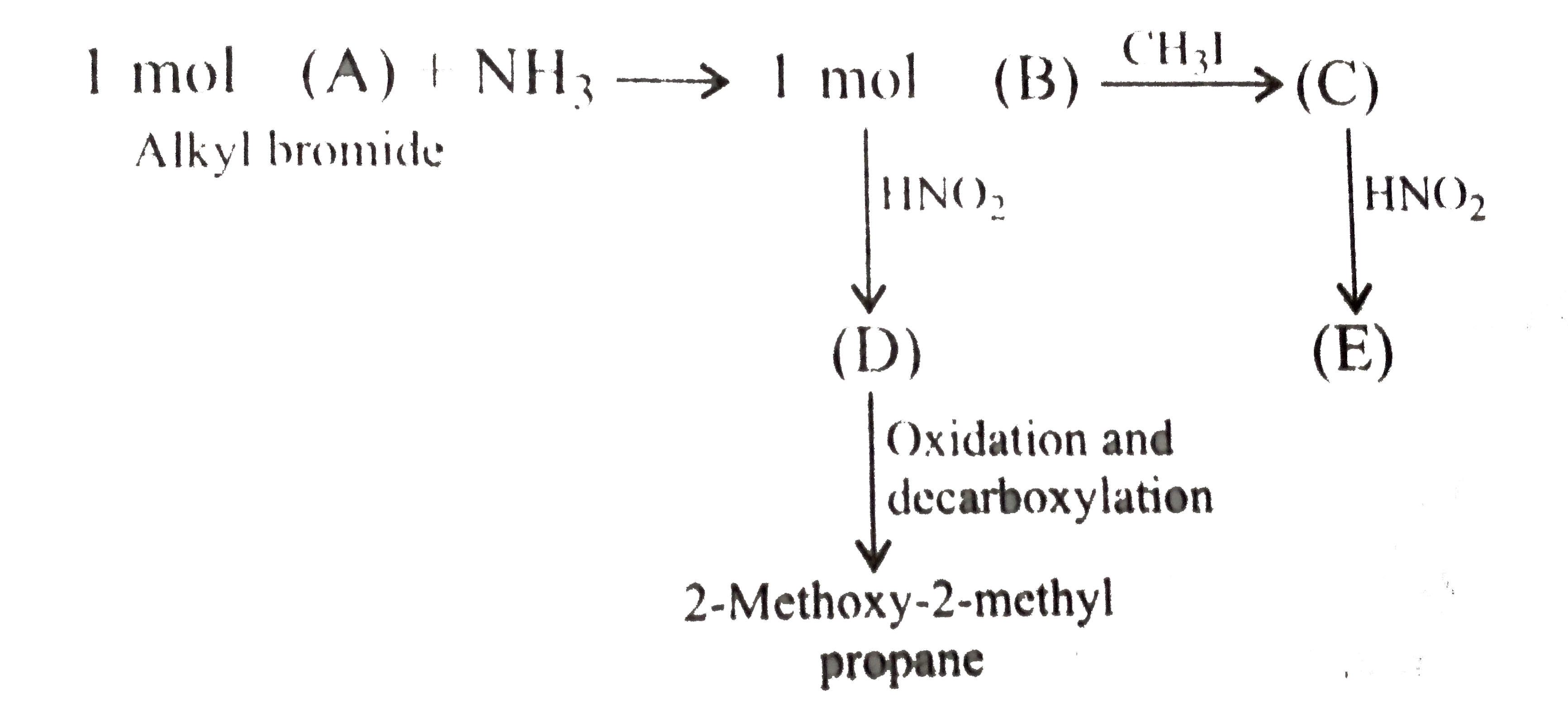 Compound `(B)` is:10:22View Solution
Compound `(B)` is:10:22View Solution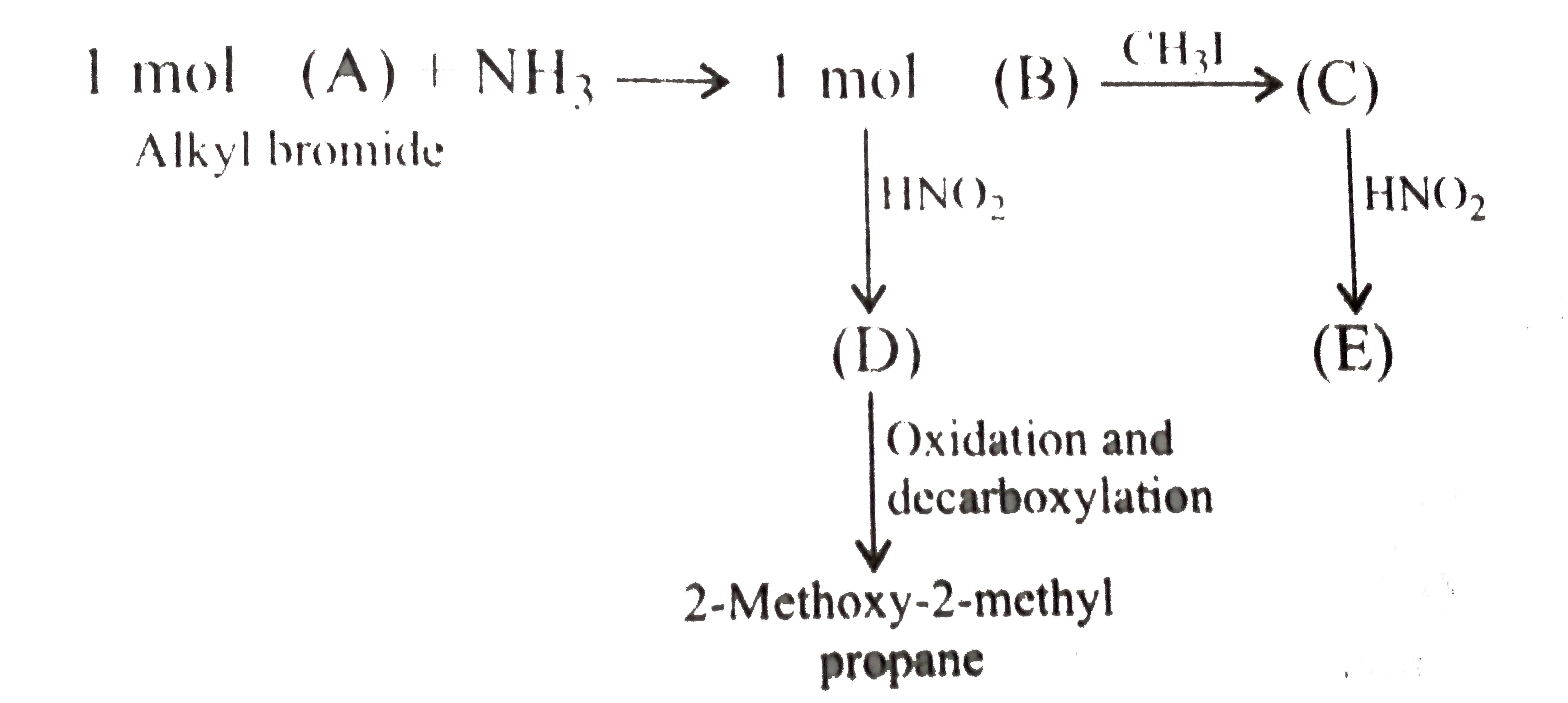 Compound `(C )` is:10:22View Solution
Compound `(C )` is:10:22View Solution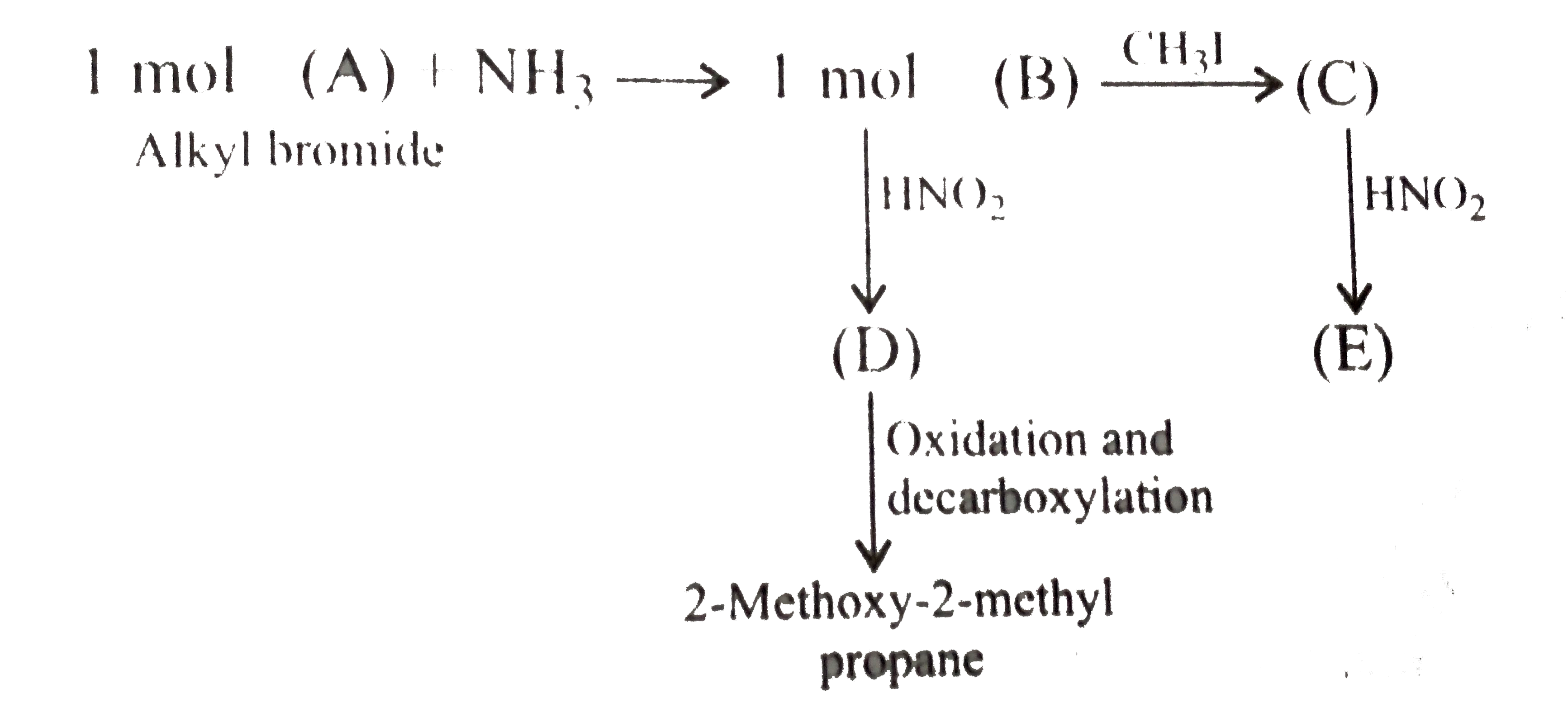 Compound`(D )`is:10:22View Solution
Compound`(D )`is:10:22View Solution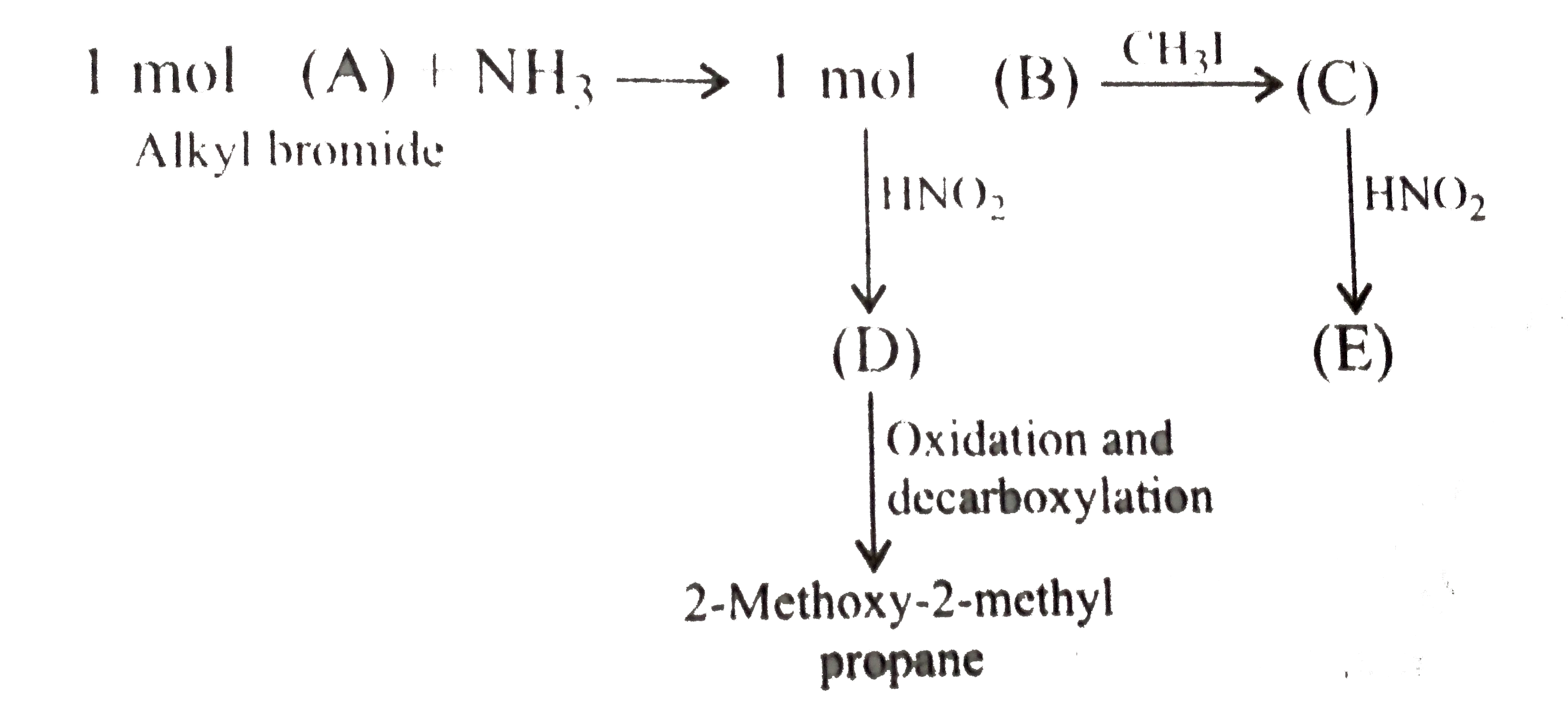 Compound`(E )`is:10:22View Solution
Compound`(E )`is:10:22View Solution`[A],[B],[C],[D],[E],[F]`,and `[G]` are amines,each of which forms a hydrochloride containing `32.42%`chloride.`[A],[B],[C]`and,`[D]`evole`N_(2)`on reaction with `HNO_(2)`but `[E],[F]`,and`[G]`donot.
Which of the following are`1^(@)`amines?10:26View Solution`[A],[B],[C],[D],[E],[F]`,and `[G]` are amines,each of which forms a hydrochloride containing `32.42%`chloride.`[A],[B],[C]`and,`[D]`evole`N_(2)`on reaction with `HNO_(2)`but `[E],[F]`,and`[G]`donot.
Which of the following are`2^(@)`amines?10:26View Solution`[A],[B],[C],[D],[E],[F]`,and `[G]` are amines,each of which forms a hydrochloride containing `32.42%`chloride.`[A],[B],[C]`and,`[D]`evole`N_(2)`on reaction with `HNO_(2)`but `[E],[F]`,and`[G]`donot.
If all the amines aree represented by the formula `R-NH_(2)`, the value of `R` in all the amines is:10:26View Solution`[A],[B],[C],[D],[E],[F]`,and `[G]` are amines,each of which forms a hydrochloride containing `32.42%`chloride.`[A],[B],[C]`and,`[D]`evole`N_(2)`on reaction with `HNO_(2)`but `[E],[F]`,and`[G]`donot.
Which of the following does not represent the structure of (A),(B),(C), and (D)?10:26View Solution`[A],[b],[C],[D],[E],[F]`,and[G] are amines,each of which forms a hydrochloride containing `32.42%`chloride.`[A],[B],[C]`and,[D]evole`N_(2)`on reaction with `HNO_(2)`but [E],[F],and[G]`do not.
Which of the following does not represent the structure of (E),)F), and (G)?10:26View Solution`[A],[b],[C],[D],[E],[F]`,and[G] are amines,each of which forms a hydrochloride containing `32.42%`chloride.`[A],[B],[C]`and,[D]evole`N_(2)`on reaction with `HNO_(2)`but [E],[F],and[G]`do not.
Which of the following gives alcohol and evolves `N_(2)` gas?10:26View Solution`[A],[b],[C],[D],[E],[F]`,and[G] are amines,each of which forms a hydrochloride containing `32.42%`chloride.`[A],[B],[C]`and,[D]evole`N_(2)`on reaction with `HNO_(2)`but [E],[F],and[G]`donot.
10:26View SolutionA substance`(X)` contains `41.37% C,6.89% H.0.166gm` of `(X)` gave`NH_(3)` which was absorbed in`50ml` of `N//10 H_(2)SO_(4)`.The excess of acid required `30ml`of `N//10 NaOH` for neutralisation.`(X)`on treatment with`HNO_(2)`gave succinc acid `(X)`on heating lost`NH_(3)` to give(A).(A) reacts with`Br_(2)`and `NAOH` to give(B) containing `41.02%C,5.88%H`, and `11.96%N.(B)`on further treatment with`Br_(2)`and `NaOH`gives `(C)(3`-amino propanoic acid).(C)reats with`NHO_(2)` to give `beta`-hydroxy-propanoic acid.
Percentage of N is (X) is:13:04View SolutionA substance`(X)` contains `41.37% C,6.89% H.0.166gm` of `(X)` gave`NH_(3)` which was absorbed in`50ml` of `N//10 H_(2)SO_(4)`.The excess of acid required `30ml`of `N//10 NaOH` for neutralisation.`(X)`on treatment with`HNO_(2)`gave succinc acid `(X)`on heating lost`NH_(3)` to give(A).(A) reacts with`Br_(2)`and `NAOH` to give(B) containing `41.02%C,5.88%H`, and `11.96%N.(B)`on further treatment with`Br_(2)`and `NaOH`gives `(C)(3`-amino propanoic acid).(C)reats with`NHO_(2)` to give `beta`-hydroxy-propanoic acid.
Compound (X) is:13:04View SolutionA substance`(X)` contains `41.37% C,6.89% H.0.166gm` of `(X)` gave`NH_(3)` which was absorbed in`50ml` of `N//10 H_(2)SO_(4)`.The excess of acid required `30ml`of `N//10 NaOH` for neutralisation.`(X)`on treatment with`HNO_(2)`gave succinc acid `(X)`on heating lost`NH_(3)` to give(A).(A) reacts with`Br_(2)`and `NAOH` to give(B) containing `41.02%C,5.88%H`, and `11.96%N.(B)`on further treatment with`Br_(2)`and `NaOH`gives `(C)(3`-amino propanoic acid).(C)reats with`NHO_(2)` to give `beta`-hydroxy-propanoic acid.
Compound (A) is:13:04View SolutionA substance`(X)` contains `41.37% C,6.89% H.0.166gm` of `(X)` gave`NH_(3)` which was absorbed in`50ml` of `N//10 H_(2)SO_(4)`.The excess of acid required `30ml`of `N//10 NaOH` for neutralisation.`(X)`on treatment with`HNO_(2)`gave succinc acid `(X)`on heating lost`NH_(3)` to give(A).(A) reacts with`Br_(2)`and `NAOH` to give(B) containing `41.02%C,5.88%H`, and `11.96%N.(B)`on further treatment with`Br_(2)`and `NaOH`gives `(C)(3`-amino propanoic acid).(C)reats with`NHO_(2)` to give `beta`-hydroxy-propanoic acid.
Compound (B) is:13:04View SolutionA substance`(X)` contains `41.37% C,6.89% H.0.166gm` of `(X)` gave`NH_(3)` which was absorbed in`50ml` of `N//10 H_(2)SO_(4)`.The excess of acid required `30ml`of `N//10 NaOH` for neutralisation.`(X)`on treatment with`HNO_(2)`gave succinc acid `(X)`on heating lost`NH_(3)` to give(A).(A) reacts with`Br_(2)`and `NAOH` to give(B) containing `41.02%C,5.88%H`, and `11.96%N.(B)`on further treatment with`Br_(2)`and `NaOH`gives `(C)(3`-amino propanoic acid).(C)reats with`NHO_(2)` to give `beta`-hydroxy-propanoic acid.
Compound (C) is:13:04View SolutionA substance`(X)` contains `41.37% C,6.89% H.0.166gm` of `(X)` gave`NH_(3)` which was absorbed in`50ml` of `N//10 H_(2)SO_(4)`.The excess of acid required `30ml`of `N//10 NaOH` for neutralisation.`(X)`on treatment with`HNO_(2)`gave succinc acid `(X)`on heating lost`NH_(3)` to give(A).(A) reacts with`Br_(2)`and `NAOH` to give(B) containing `41.02%C,5.88%H`, and `11.96%N.(B)`on further treatment with`Br_(2)`and `NaOH`gives `(C)(3`-amino propanoic acid).(C)reats with`NHO_(2)` to give `beta`-hydroxy-propanoic acid.
The conversion of (B) to (C) is called:13:04View Solution
Exercises Linked Comprehension questions and complete solutions for chapter ORGANIC COMPOUNDS WITH FUNCTIONAL GROUP of CENGAGE CHEMISTRY (HINGLISH) of Class 12
All Exercises from CENGAGE CHEMISTRY Class 12 CHEMISTRY ORGANIC COMPOUNDS WITH FUNCTIONAL GROUP
- Archives Analytical And Descriptive
- Archives Assertion-Reasoning
- Archives Fill In The Blanks
- Archives Multiple Correct
- Archives Single Correct
- Exercises Assertion And Reasoning
- Exercises Concept Application
- Exercises Linked Comprehension
- Exercises Multiple Correct
- Exercises Single Correct
- Exercises Subjective
- Illustration 15.1
- Solved Examples
